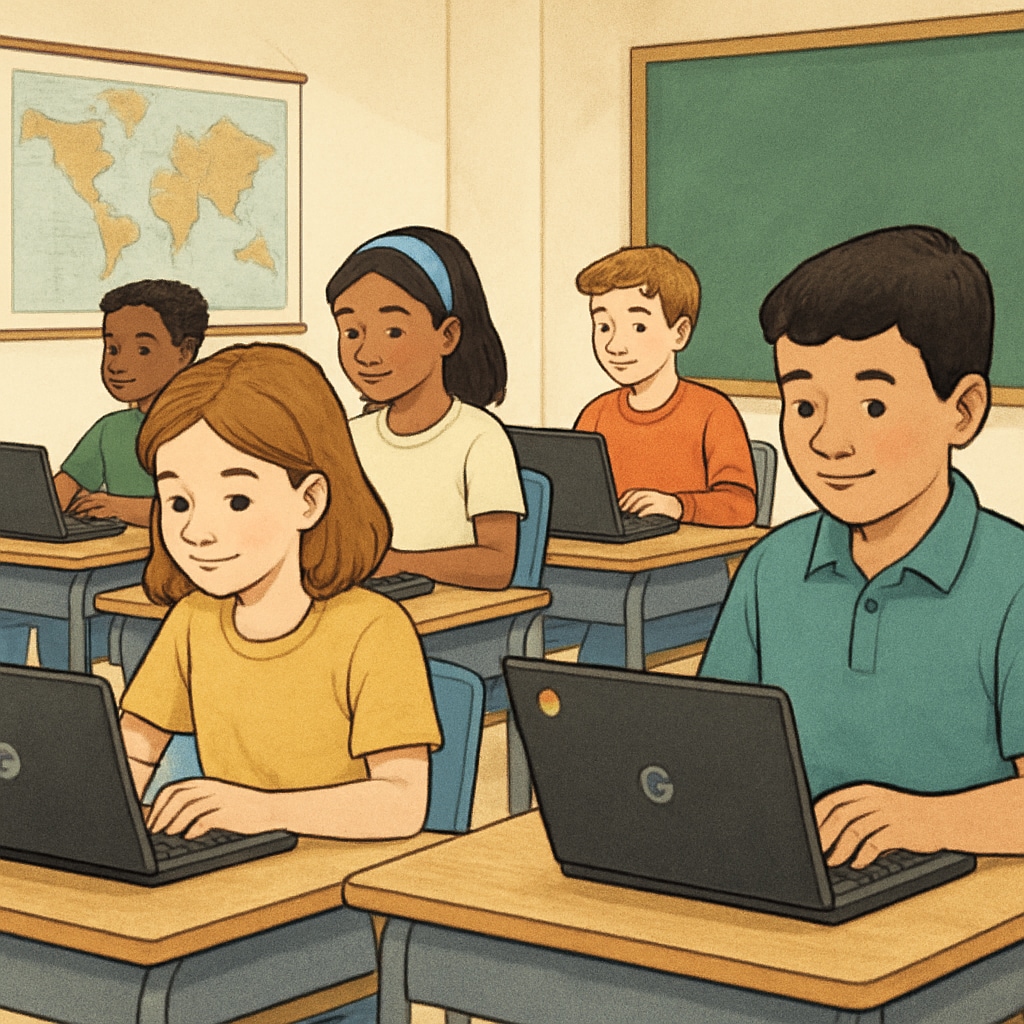In today’s classrooms, the integration of educational technology (EdTech) such as Chromebooks has become a defining feature of modern K12 education. These tools promise increased efficiency, accessibility, and engagement. However, they also raise an important question: is the pursuit of teaching efficiency inadvertently undermining the development of critical thinking skills in students? As educators embrace digital solutions, it is vital to explore the nuanced relationship between technology-driven education and the cultivation of critical cognitive abilities.
How Educational Technology Enhances Classroom Efficiency
EdTech tools, such as Chromebooks, have revolutionized the learning experience by streamlining many traditional teaching processes. For example, platforms like Google Classroom enable educators to distribute assignments, provide instant feedback, and track student progress in real-time. Additionally, digitized resources reduce the dependency on physical textbooks and paper-based materials, making learning more accessible and environmentally friendly.
Moreover, interactive tools like educational apps and gamified learning platforms help maintain student engagement. These technologies cater to diverse learning styles, offering multimedia content that appeals to auditory, visual, and kinesthetic learners alike. Efficiency in content delivery allows teachers to allocate more time to personalized instruction and classroom discussions.

The Impact on Critical Thinking Skills
While EdTech enhances operational efficiency, its influence on critical thinking—the ability to analyze, evaluate, and synthesize information—warrants scrutiny. The structured and often automated nature of digital learning platforms may limit opportunities for students to grapple with open-ended problems or engage in deep, reflective thought. For instance, multiple-choice quizzes and algorithm-driven assessments prioritize quick, measurable outcomes over the process of reasoning through complex ideas.
Furthermore, reliance on search engines and pre-packaged information can hinder the development of independent research skills. Students may become accustomed to finding ready-made answers rather than questioning assumptions or exploring diverse perspectives. Critical thinking thrives in environments that challenge students to navigate ambiguity, yet digital platforms often prioritize convenience and speed over cognitive rigor.
Striking a Balance: Maximizing Technology Without Sacrificing Thought
To fully leverage the benefits of EdTech without compromising critical thinking, educators can adopt several strategies:
- Integrate Open-Ended Assignments: Design tasks that require students to analyze case studies, debate ethical dilemmas, or create original projects, encouraging them to think beyond right-or-wrong answers.
- Encourage Media Literacy: Teach students to critically evaluate online sources, fostering discernment in an age of abundant information.
- Blend Digital with Analog: Combine technology-based activities with traditional methods like Socratic seminars or written essays to ensure a well-rounded approach to learning.
- Prioritize Process Over Results: Emphasize the importance of effort, reasoning, and exploration rather than just focusing on the final product.
By incorporating these practices, educators can create a balanced learning environment where technology enriches, rather than diminishes, students’ critical thinking abilities.

The Role of Educators in Shaping the Future of EdTech
Ultimately, the success of EdTech in fostering both efficiency and critical thinking depends on how it is implemented. Educators play a pivotal role in ensuring that technology serves as a tool for deeper learning rather than a crutch for passive consumption. Professional development programs should equip teachers with the skills to integrate EdTech thoughtfully, balancing its advantages with the need for cognitive engagement.
In addition, schools and policymakers must critically evaluate the educational technologies they adopt. Rather than focusing solely on cost and convenience, decision-makers should assess how these tools align with broader pedagogical goals, including the promotion of critical thinking and problem-solving skills.
As we continue to innovate in education, the challenge lies in using technology to enhance—not replace—the human elements of teaching and learning. By remaining mindful of this balance, we can prepare students for a future where both technical proficiency and critical thinking are essential.
Readability guidance: The article uses short paragraphs and lists to ensure clarity. Transition words like “however,” “in addition,” and “therefore” are included to improve flow. Passive voice is minimized, and sentence length is controlled for better readability.


